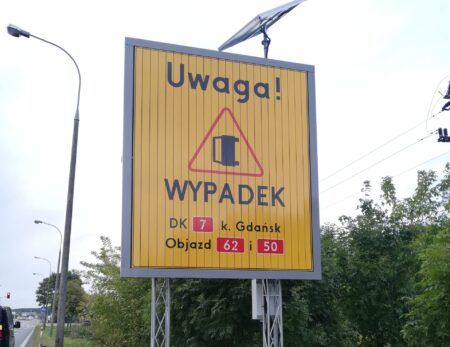The Texas Department of Transportation (TxDOT) is upgrading its traffic information network with the commissioning of new dynamic message signs (DMS) along I-35 and other roadways around Austin, in time for the summer travel season.
The 27 permanent signs are connected to the agency’s Combined Transportation Emergency and Communications Center (CTECC) through a fiber-optic communications network. The DMS will alert drivers to incidents ahead, ramp or lane restrictions, upcoming construction and other important information about current or future highway conditions. Besides providing drivers with incident information and lane restrictions, the DMS are also used to convey other types of information from time to time, such as highway travel times to certain locations, or Amber Alerts that are determined and controlled by the Department of Public Safety. The signs often display pre-set messages stored in the system, as well as specific messages based on current road conditions.
The new DMS are being paid for by the Texas Clear Lanes Initiative, a strategic plan to address the state’s most congested chokepoints. Texas’ strong economy is generating unprecedented population growth, which means more cars on the state’s roadways. According to Texas A&M University’s Texas Transportation Institute (TTI), the number of registered vehicles in Texas has risen 172% in the past 40 years, while in the same period, overall highway capacity has increased by only 19%.
In addition to the signs, there are now 40 active traffic cameras in the capital region as part of the Mobility35 program. Some of them work in conjunction with the ‘smart work zone’ system, which features real-time travel information, as well as message signs to help drivers be aware of the impacts of highway construction.
These new signs and traffic cameras are part of TxDOT’s Traffic Management System (TMS), which uses technology solutions to reduce congestion and improve safety during and after construction. TMS provides drivers with reliable, real-time data to allow them to make better travel decisions considering routes, travel modes, and timing of trips, which increases reliability of the overall transportation network.
“With I-35 in central Texas being one of the most congested highways in the state, we have to keep looking for ways to manage traffic throughout this corridor,” said Terry McCoy, Austin District engineer at TxDOT.
“Knowing there is no one single strategy to reduce traffic by itself, we’re taking an ‘everything including the kitchen sink’ approach to improve mobility and communication on I-35.”




